For those who don’t know, PPA is the Perennial Plant Association to which I have belonged since 1984. Having attended almost all of the national conferences, I delight each year in the “family” reunion during which we talk plants morning, noon, and night. Each conference consists of lectures and garden tours, networking, and sharing.
Since you couldn’t attend, I will share some of the sights and information to which I was privy.
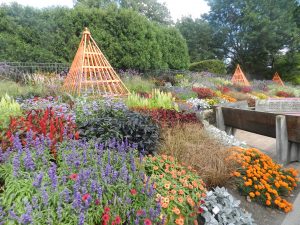
The bright orange of the obelisks and some annuals was tempered by the use of chartreuse and purple annuals.

The use of blue obelisks in the middle of sheared, formal beds offset what might otherwise have been fairly boring.
I visited three botanical gardens during this time. At Rotary Botanical Gardens in Janesville, Wisconsin, I marveled at the use of painted obelisks.
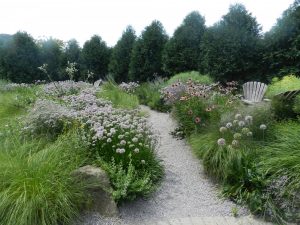
How pleasant to walk between pale purple Allium and pink Echinacea that nestle among the medium green grasses.

his sunny dry white garden is totally different than the typical English white garden. The perennials mingle with the grasses that offer a different but calming texture.
At Olbrich Botanical Gardens in Madison, Wisconsin, I loved their naturalistic gardens that mingle ornamental grasses and perennials. One was a simple mix of alliums, Eryngium yuccafolium, Echinacea, and grasses. Another was an atypical white garden of Echinacea, Veronica, Eryngium yuccafolium, Physostegia, Phlox, and Calamintha.
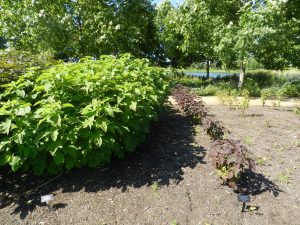
t is immediately apparent to the viewer which of these two Hibiscus cultivars are more likely to survive in the average gardener’s site.
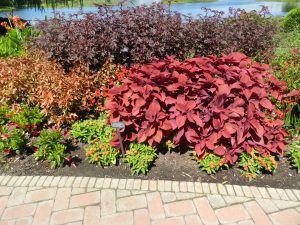
he display gardens always offer interesting color coordinated combinations of annuals. This time, the dark purple, dissected foliage of Hibiscus acetosella acts as a background for Acalypha ‘Inferno’ and Coleus ‘Redhead’.
I have been lucky enough to have visited the Chicago Botanic Garden many times and their display gardens are lovely but this time, I concentrated on the trial gardens run by Richard Hawke. He selects particular genera and then plants cultivars, provided by several different growers, side by side for evaluation. I always read his reports but it is still invaluable to see these plants and make my own notes.
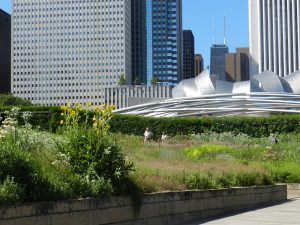
he Lurie Garden, seen here with Silphium, a white Echinacea, Ernygium yuccafolium, and grasses, is a haven for people and pollinators.
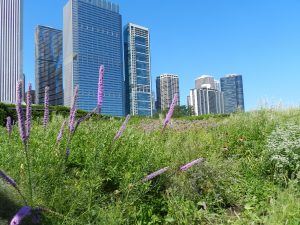
Many prairie plants such as Liatris pcynostachya and Echinacea have been combined with Allium and Pycnanthemum muticum which bees and butterflies adore.
The other large public garden we visited was in downtown Chicago at Millenium Park in which the Lurie Garden is located. Designed by Piet Oudolf, it conveys the notion of a rolling prairie. Grasses undulate between sweeps of perennials that were chosen for their appearance after bloom as well as for their bloom type and color and their attraction to pollinators. Enclosed by a tall evergreen hedge and set against the addtional background of city sky scrapers, it is an amazing experience.
We also saw many private gardens but time is short so that’s it for a very brief overview of my trip.


0 Comments